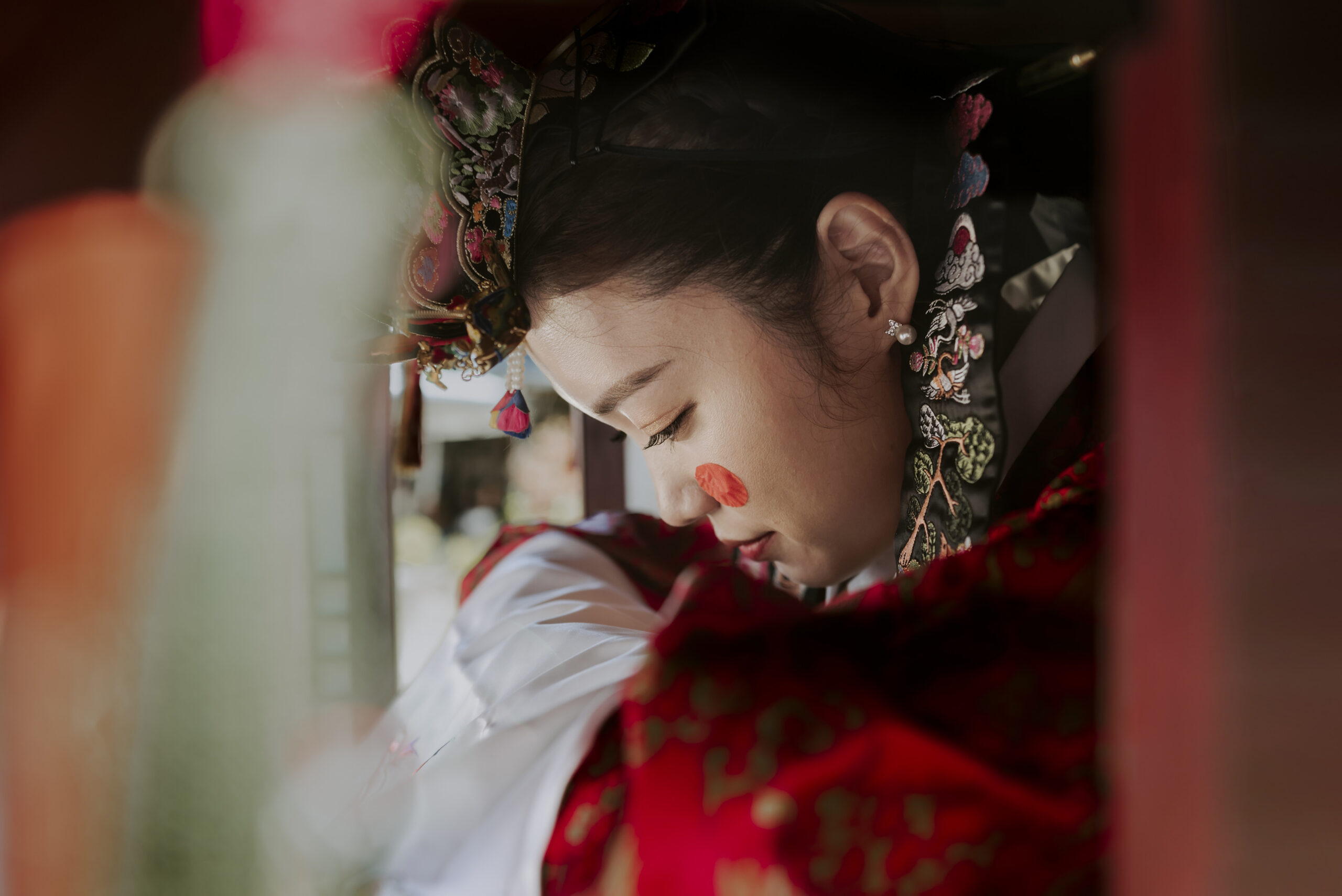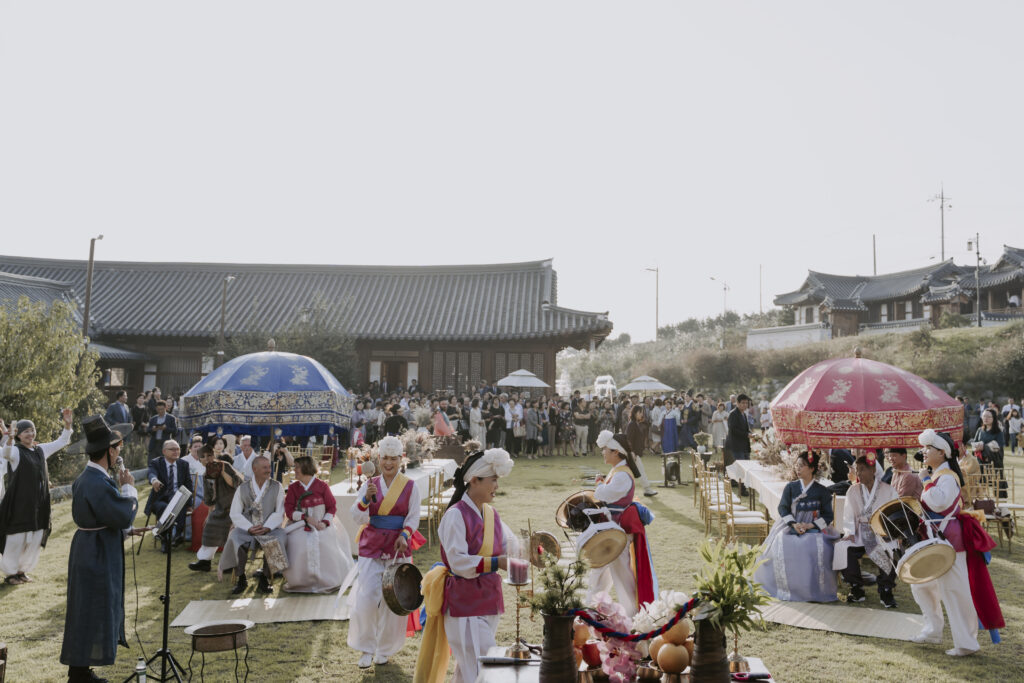
Saying “I Do” the Korean Way: A Fascinating Dive into Traditional Korean Wedding Rituals
Step into the enchanting world of traditional Korean wedding rituals and prepare to be captivated by the rich cultural tapestry that unfolds before you. Steeped in history and abundant with symbolism, these age-old traditions have been passed down through generations, each one carrying its unique significance.
In this fascinating journey through time, we will delve into the mystique of the Korean wedding ceremony, uncovering the hidden meanings behind every ritual and gesture. From the intricate attire to the meticulously planned rituals, every element plays a vital role in celebrating the union of two souls.
Discover the deep-rooted traditions that shape the Korean wedding experience, from the elaborate wedding processions to the intimate ancestral rituals. Gain insights into the profound symbolism behind the use of vibrant colors, delicate hanboks, and elaborate decorations.
For modern Korean couples, the ancient traditions of a wedding are making an unexpected comeback. With romantic undertones and nostalgic values, more people are embracing their cultural heritage by adding meaningful elements from traditional ceremonies to special days. As this trend increases, lovebirds around Korea relish creating moments that will be cherished forever! This guide will help you plan the perfect traditional South Korean wedding.
Traditional Korean Wedding Attire
One of the most visually striking aspects of a traditional Korean wedding is the attire worn by the bride and groom. The bride wears a hanbok, a traditional Korean dress characterized by vibrant colors and intricate embroidery. The colors chosen for the hanbok hold symbolic meaning, with red representing good fortune and yellow symbolizing fertility. The groom also wears a hanbok, usually in more muted tones.
The bride’s hanbok consists of several layers, including a jeogori (jacket), chima (skirt), and a jeonbok (overcoat). The hanbok is often adorned with exquisite accessories, such as a norigae (pendant) and a jokduri (a type of crown). The groom’s hanbok is simpler and typically consists of a jeogori, baji (pants), and a durumagi (robe).
There are so many ways to find the perfect hanbok for your special day! Some couples opt to buy their own, while others choose the more convenient option of renting. Couples can choose between making their own or renting. Plus – if family members rent their hanboks at the same store as you there may even be discounts available on rent. Shopping for hanboks is made easy with hundreds of stores across Korea but if you’re looking for something beyond conventional styles, Instagram has got some great independent designers.
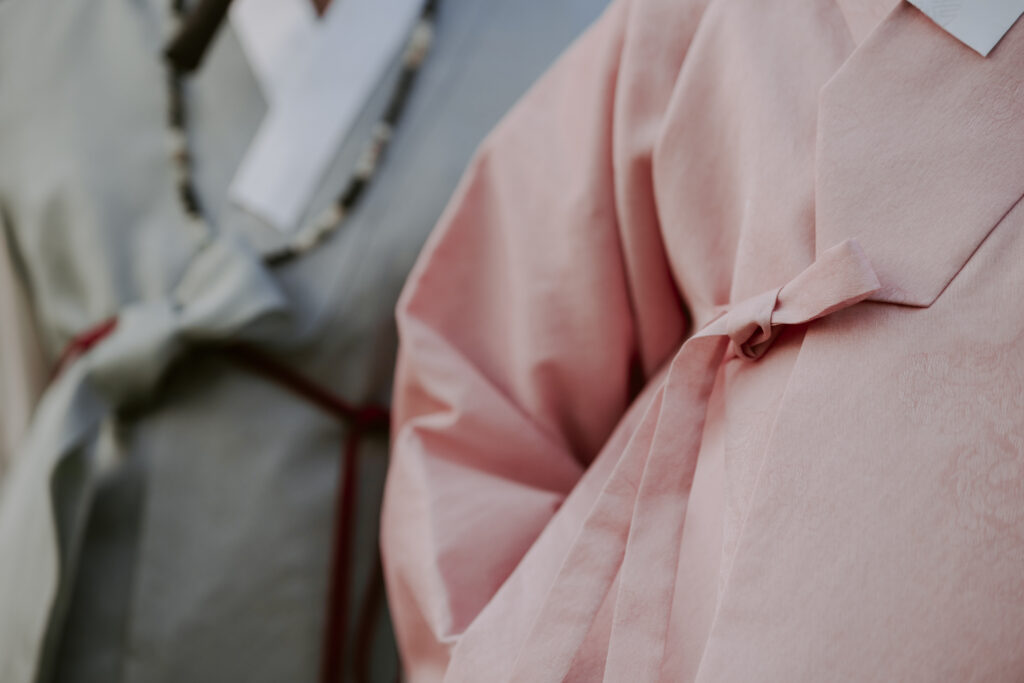
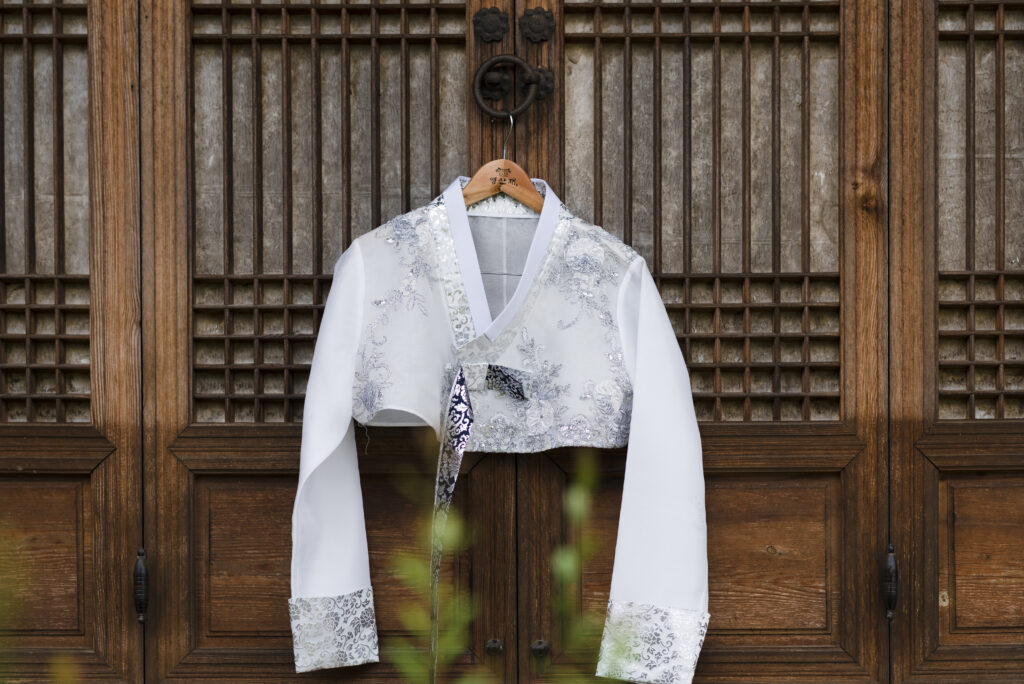
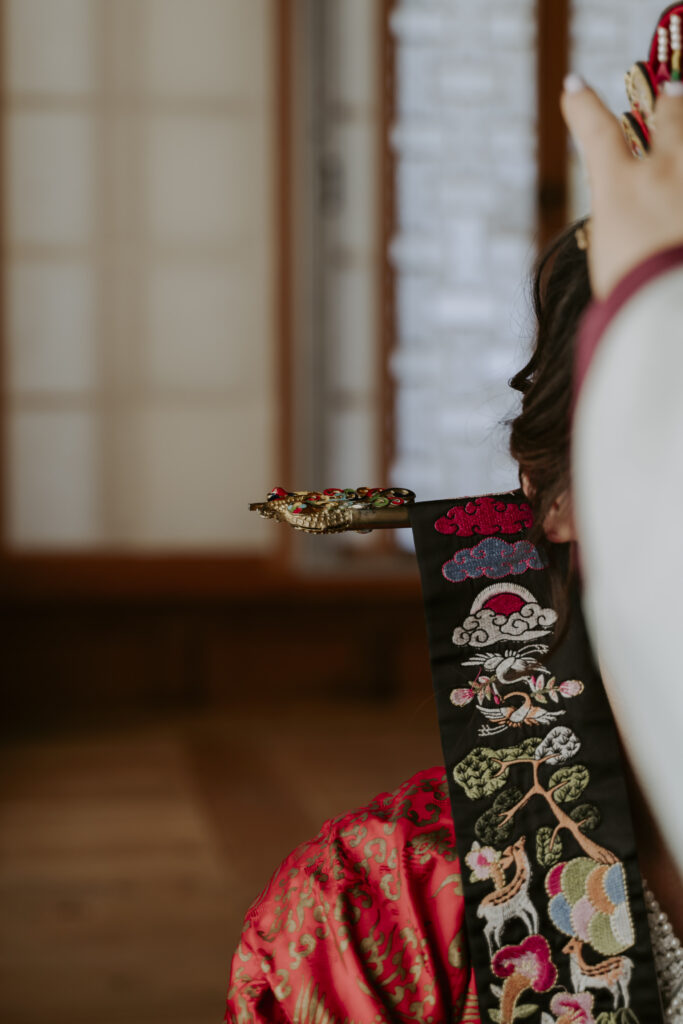
Makeup
Choosing the perfect makeup artist for your big day can feel like a daunting task! With so much talent out there, it often comes down to finding someone whose aesthetic matches what you have in mind. While Instagram is helpful when narrowing down who could be the right fit, take into account that behind every beautiful picture are other unseen skills and experiences – not all masters of their trade shine brightly on social media.
Having a wedding planner who’s made hundreds of brides look fabulous on their special day can help you find the perfect makeup artist. They won’t just offer Korean-style looks – they know how to make all kinds of faces sparkle regardless of skin tone with unique, individualized touches!
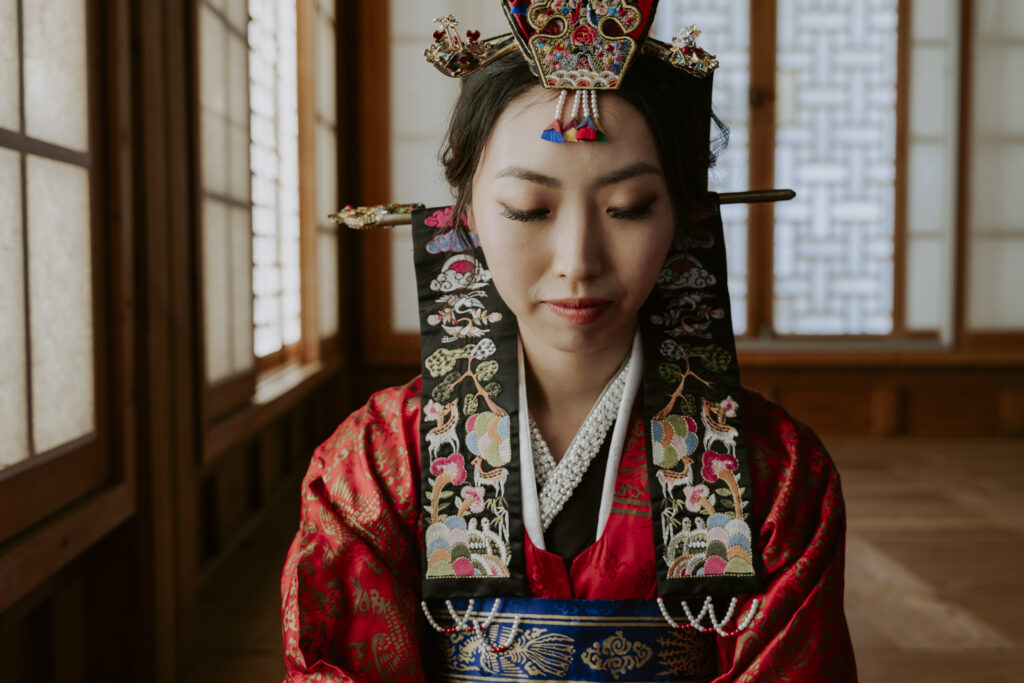

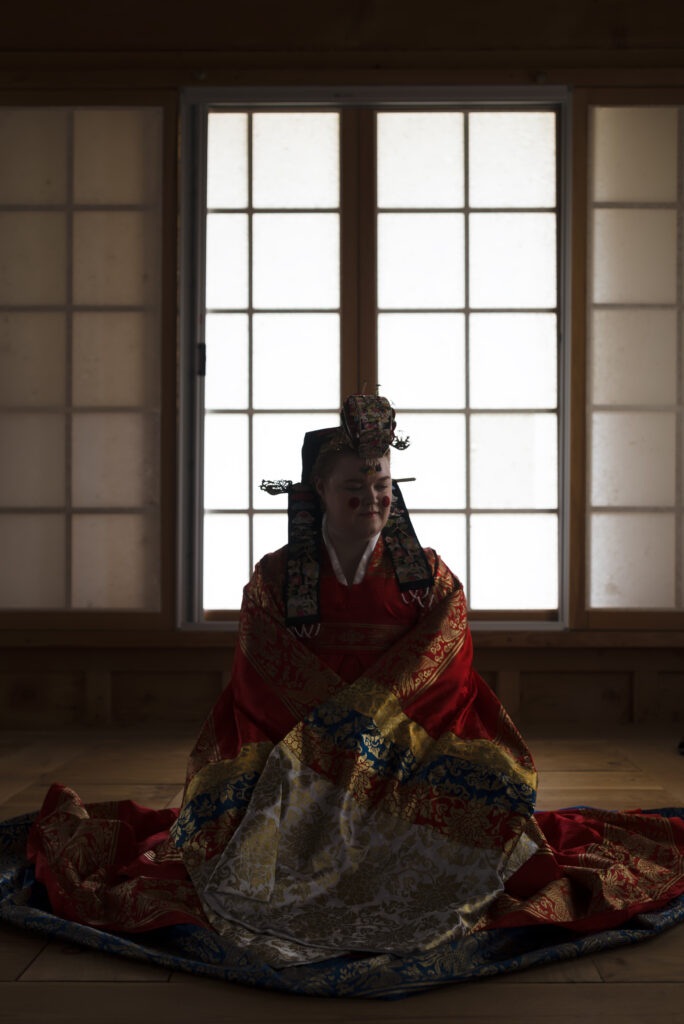
The Korean Wedding Ceremony – A Step-by-Step Guide
On your big day, you and your loved ones can all get glammed up together at the same makeup shop! Makeup artists will work their magic to ensure everyone in the family looks picture-perfect – even Dad might be getting a touch-up too. Of course, if anyone has their own go-to artist available, they may feel more comfortable getting ready separately.
In Korea, weddings present a unique opportunity for couples to spend quality time together: the bride and groom travel side-by-side on their way to the venue instead of superstitiously avoiding each other. Traditional Korean wedding venues feature stunning prep rooms for those all-important final preps before getting out there and making memories with your truly!
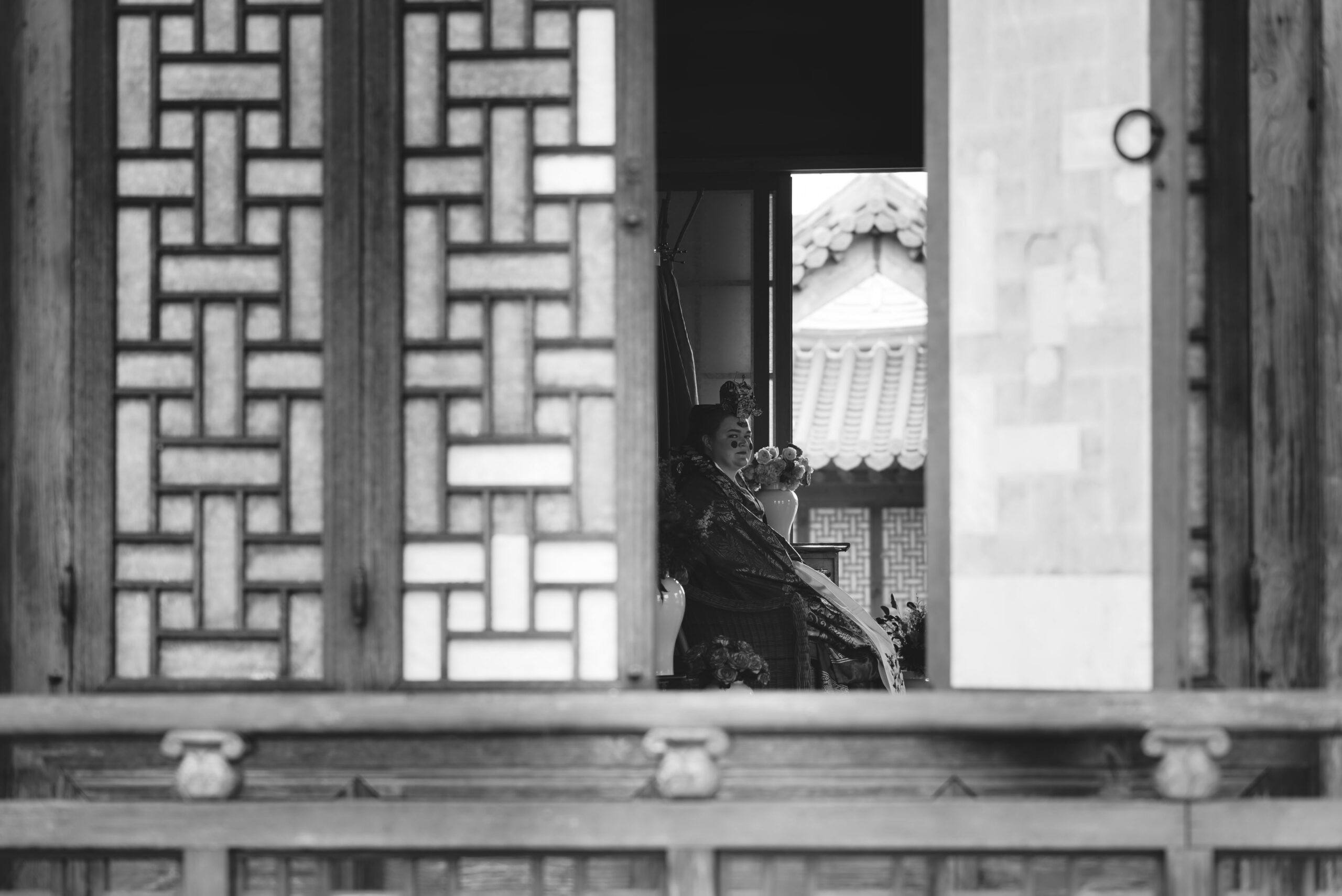
Getting Ready
For your special day, you’ll be supported by two helpers who will make sure that everything runs smoothly. You and your beloved will look like royalty in traditional robes. Red for the bride symbolizes enthusiasm and active energy while blue for the groom brings healing and relaxation – together these yin-yang colors balance out.
Brides can expect to sparkle from head-to-toe with their elegant hanbok plus a special accessory – yeonji gonji, or red dots on both cheeks – thought to bring protection against evil spirits. Grooms don’t miss out either – they get to wear an awe-inspiring dragon robe called the ‘gonryongpo’ which dates back hundreds of years ago during Joseon dynasty times.
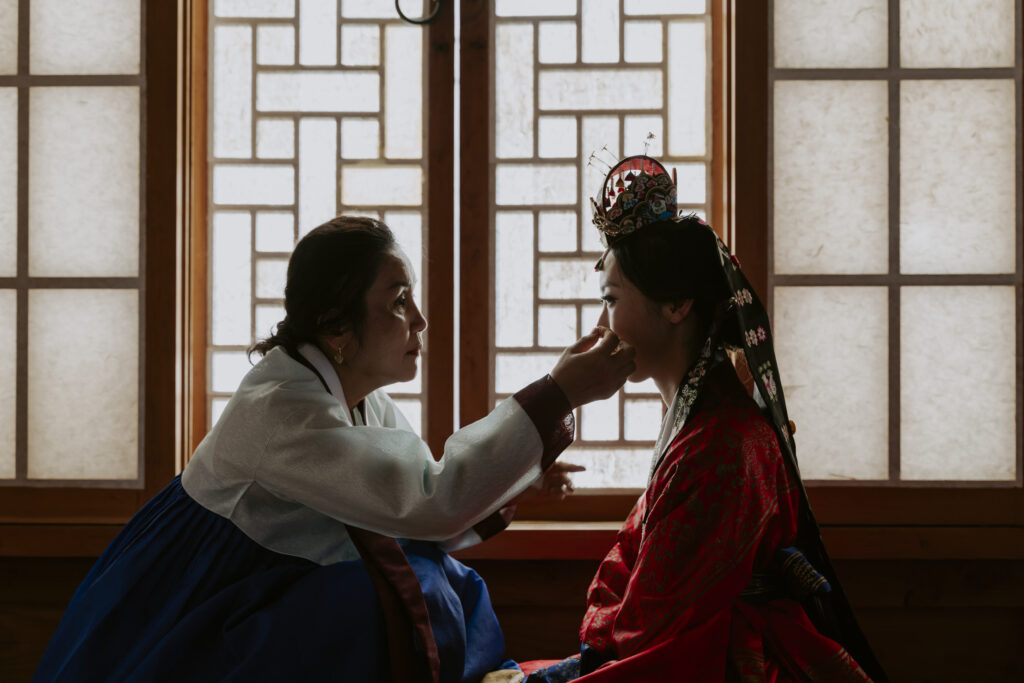

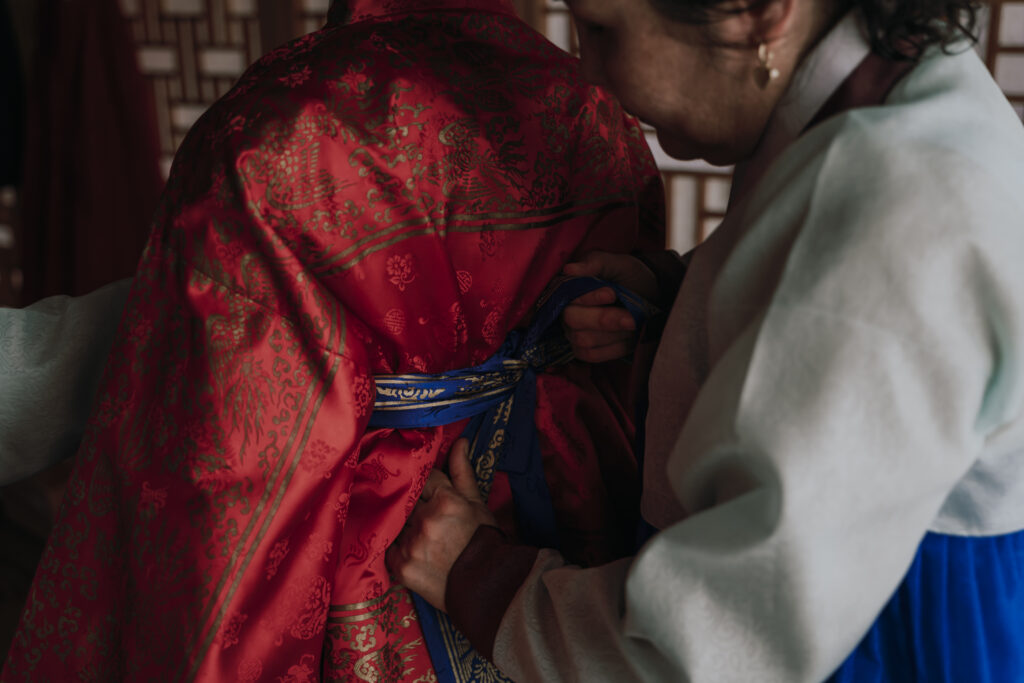
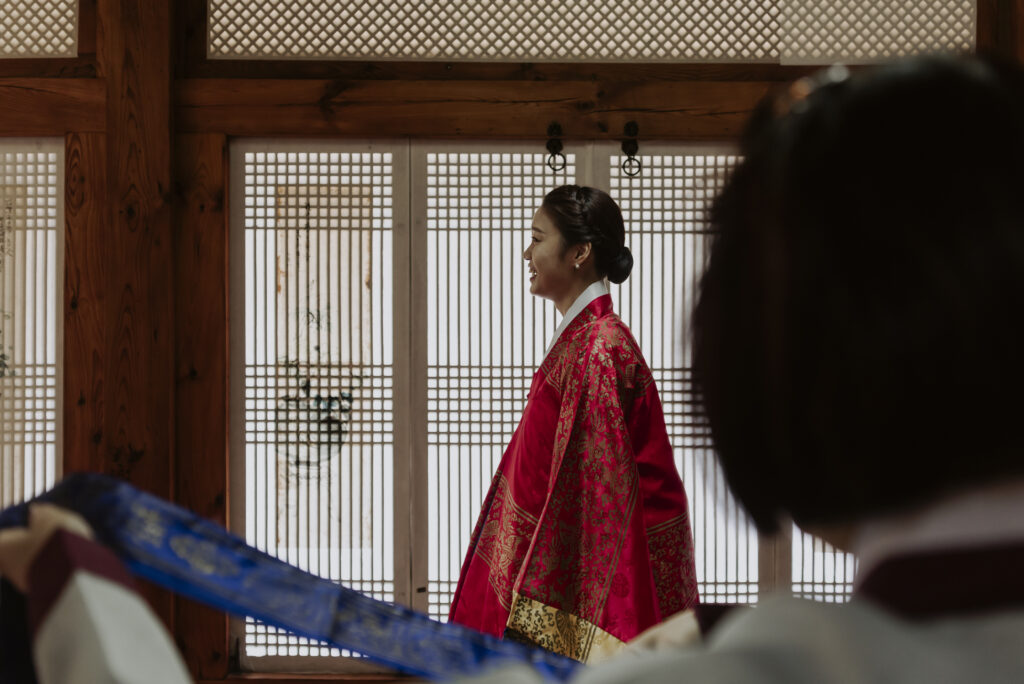
Greeting the guests
The groom will stand outside ready to personally greet each guest that arrives along with parents and siblings from both sides of the family.
Korean weddings are all about celebrating the bride’s beauty and showing it off to guests. Before the ceremony begins, a “bridal room” is set up–decorated in white or other elements like flowers that fit your desired theme. People arrive early for photo opportunities with the bride.
Brides who do not feel comfortable with being seen before the ceremony can communicate this to their planner and remain hidden.
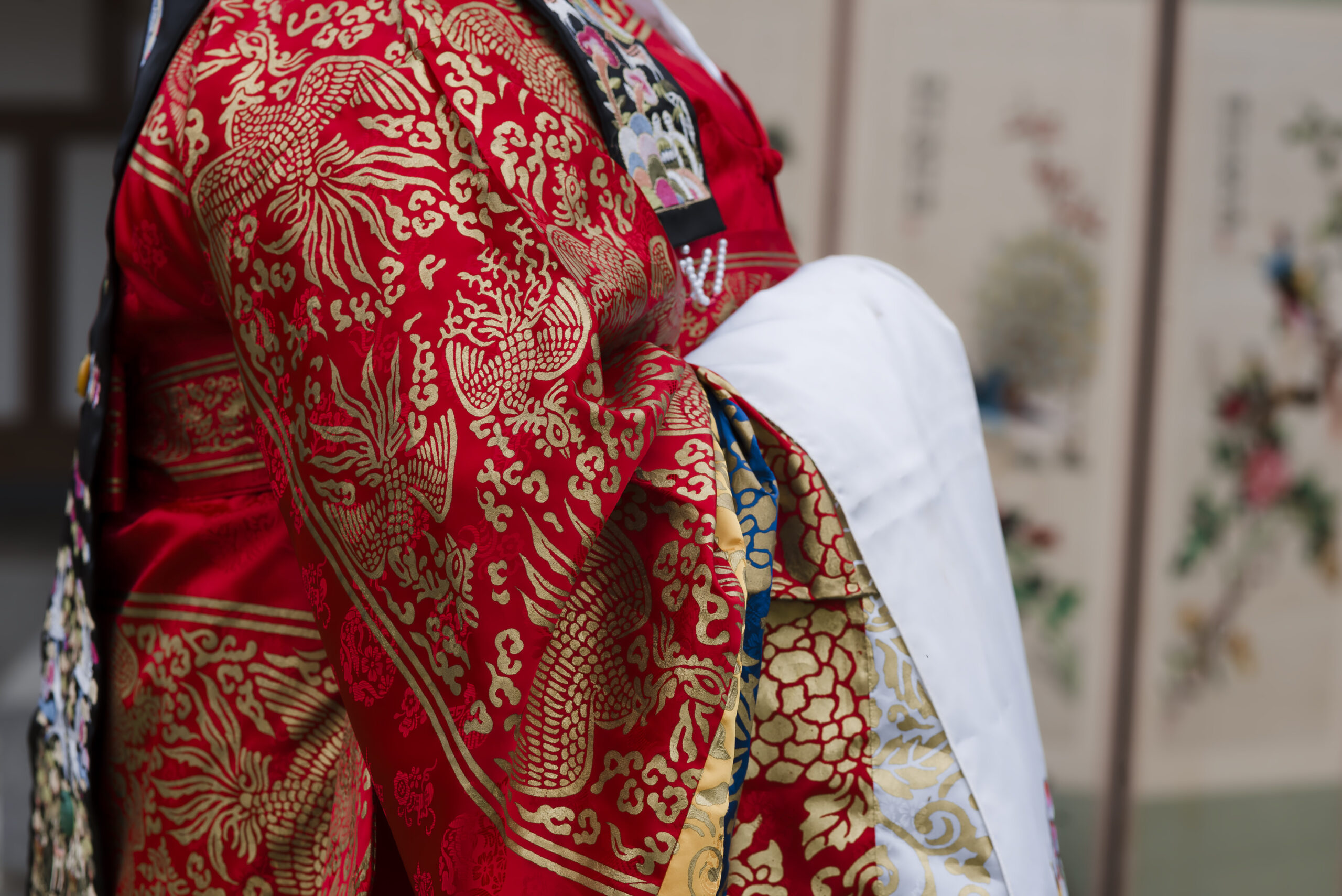
PRE-WEDDING CEREMONY
A traditional Korean wedding ceremony is a meticulously planned affair, with each step carefully choreographed to honor the couple and their families. Let’s take a closer look at the various elements that make up this enchanting ceremony.
Salmulnori
Korean weddings are truly a spectacle for the senses! Before beginning, guests might be treated to an exciting performance of Salmulnori – traditional music that features four musicians dancing and playing instruments in colorful costumes with long ribbon-adorned hats. The ensemble performances symbolically evoke thunder (kkwaenggwari), wind (jing), rain (janggu), and clouds(buk).
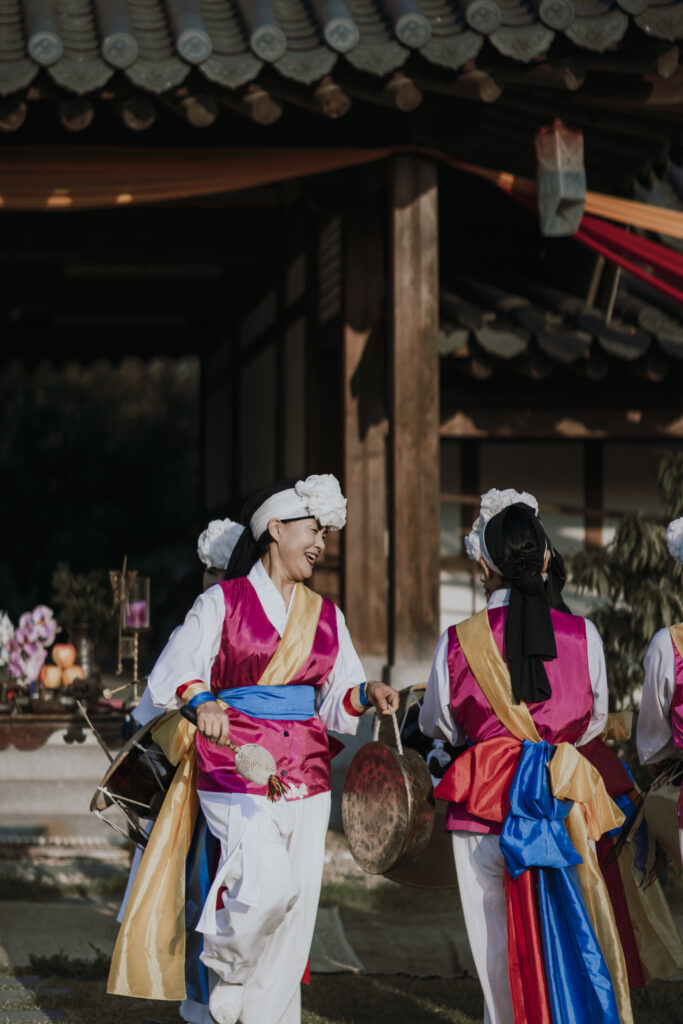
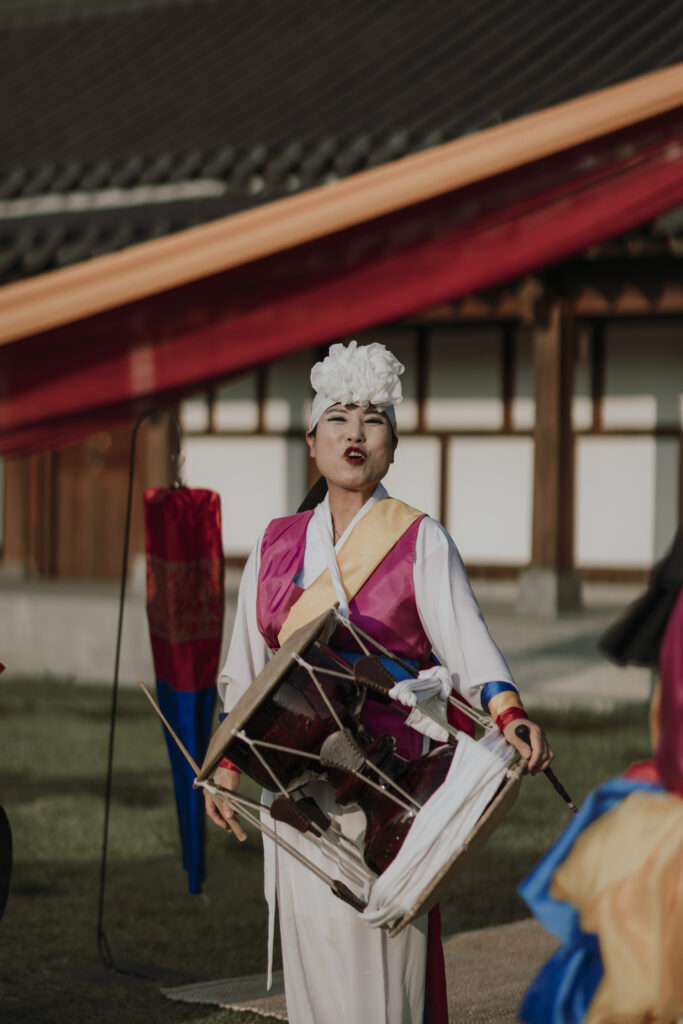
CEREMONY
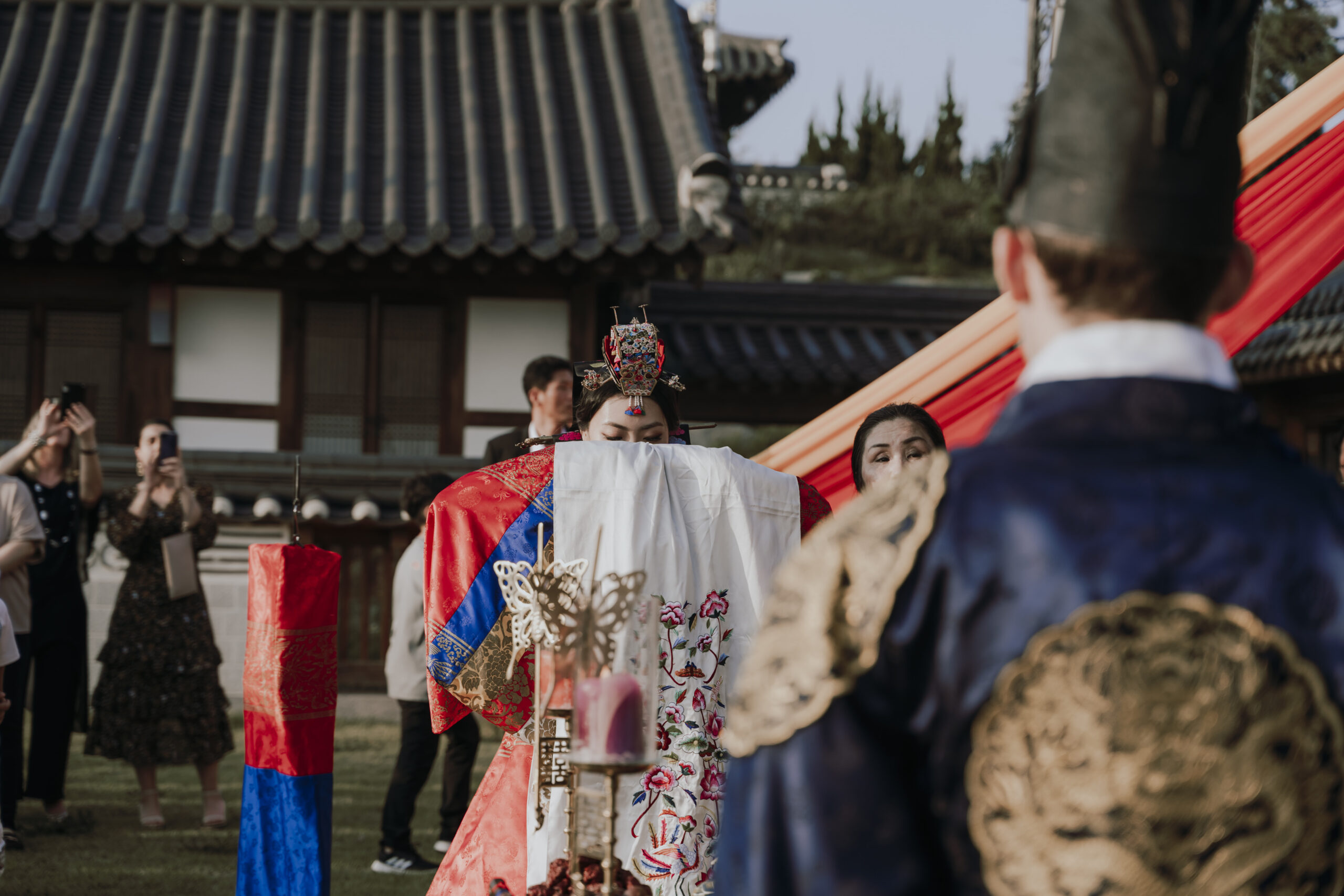
Jeom-chok Rye
A Korean wedding ceremony is traditionally marked with music, colorful processions, and beautiful symbols. In a beautiful gesture to mark the joining of two families, both mothers enter carrying candles – one red for the bride’s side and another blue for the groom. As they reach their destination at end of the procession, an additional single candle is lit to commence the proceedings. They then bow respectfully to each other before bowing in reverence toward all the wedding guests.
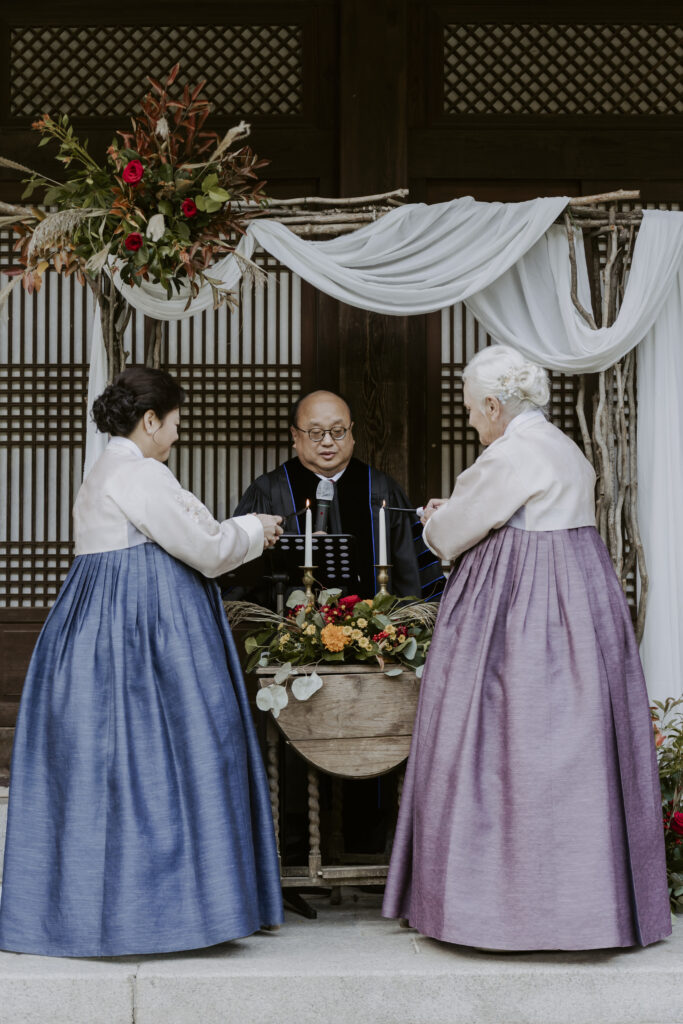

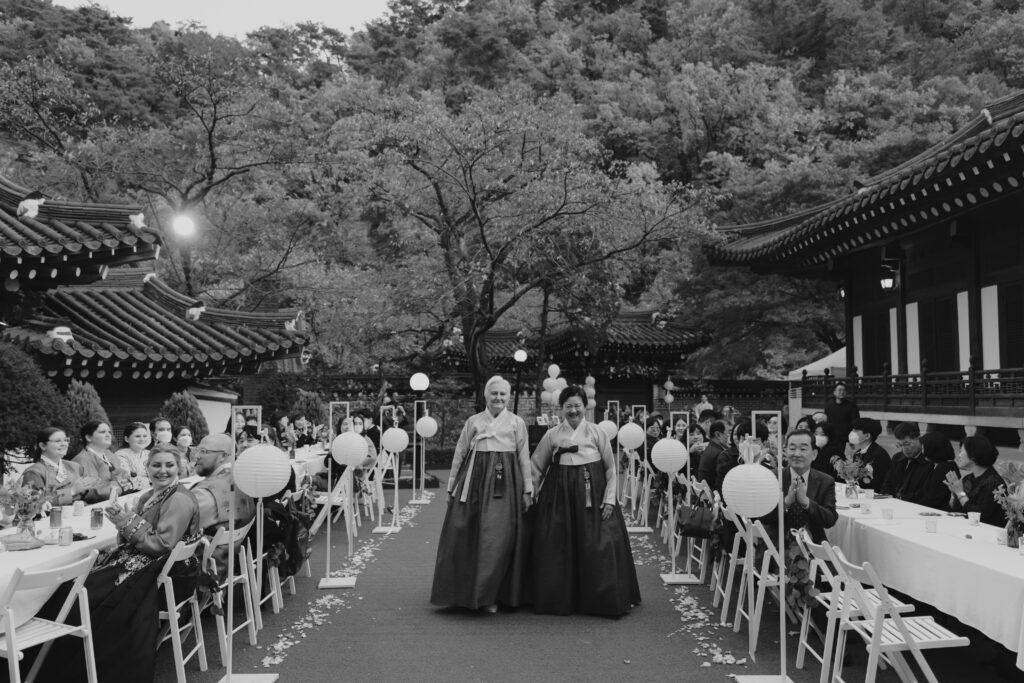
Yongseorye
Traditionally, weddings were held in the bride’s family home. To enhance this joyous celebration, the groom and attendants would arrive by horse or pony accompanied by music to generate a festive atmosphere – although for tradition’s sake, the groom had to remain composed during his entrance!
The groom is ushered into the courtyard by his Girukabi – an esteemed best man carrying the wedding geese. Once they have entered, the Girukabi will hand the Geese to the groom.

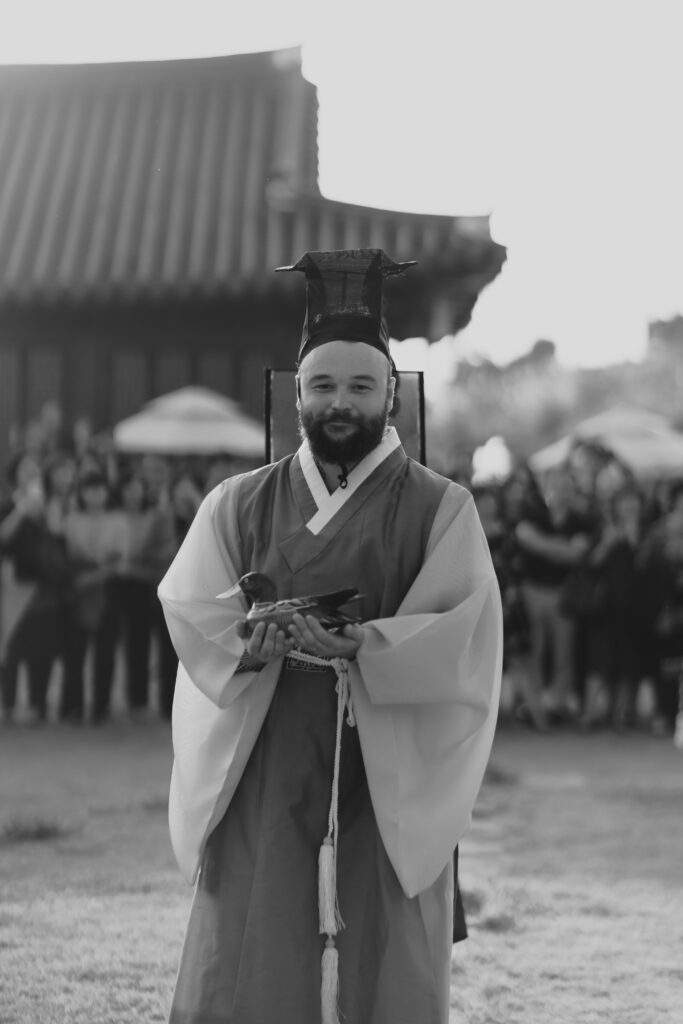
Jeonanrye
Wild geese are the ultimate symbol of marital commitment, representing both harmony and unconditional love. Wild geese (a mandarin duck, to be exact) mate for life: they keep their promises of love and never find another, if they lost their partner.
The groom will hand over the wooden geese to his new mother-in-law as a symbol of his loyalty to her daughter.
Following the procession of the groom, the bride is ferried in a celebratory palanquin box or “gama” and carried by four of the groom’s friends. Nestled inside and adorned with finery, she’ll take care to preserve tradition by covering as much skin – including her face – as possible whilst en route.
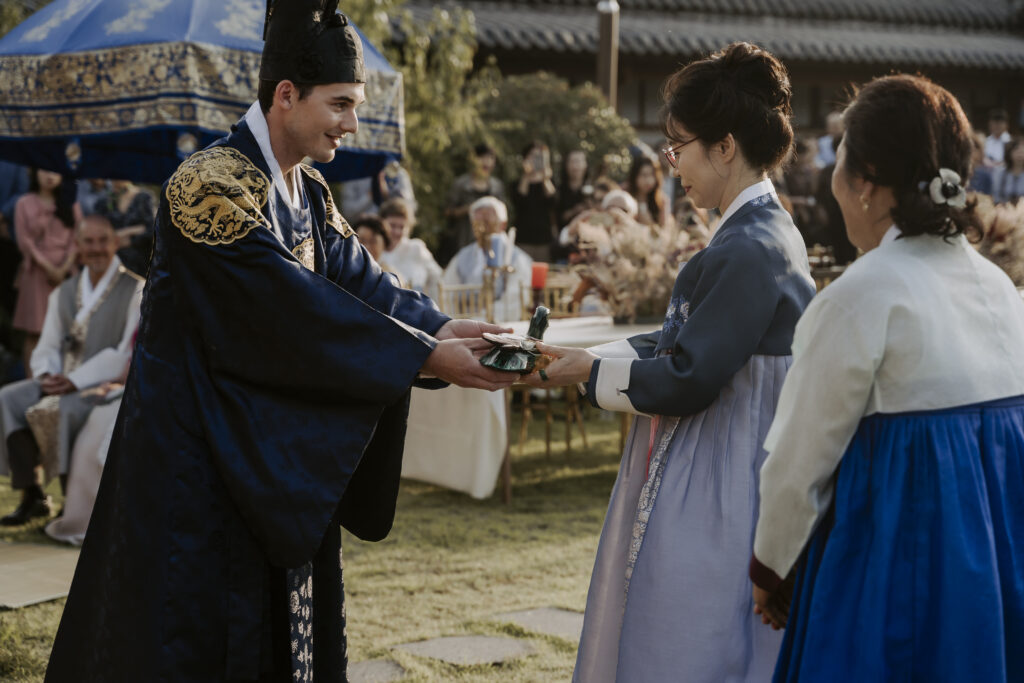
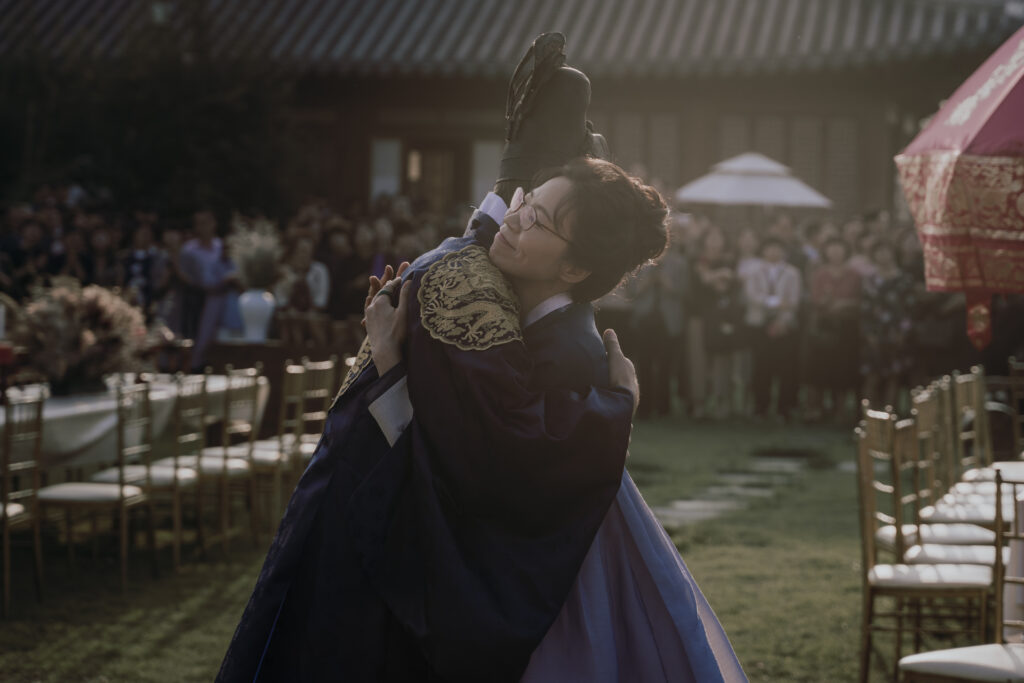

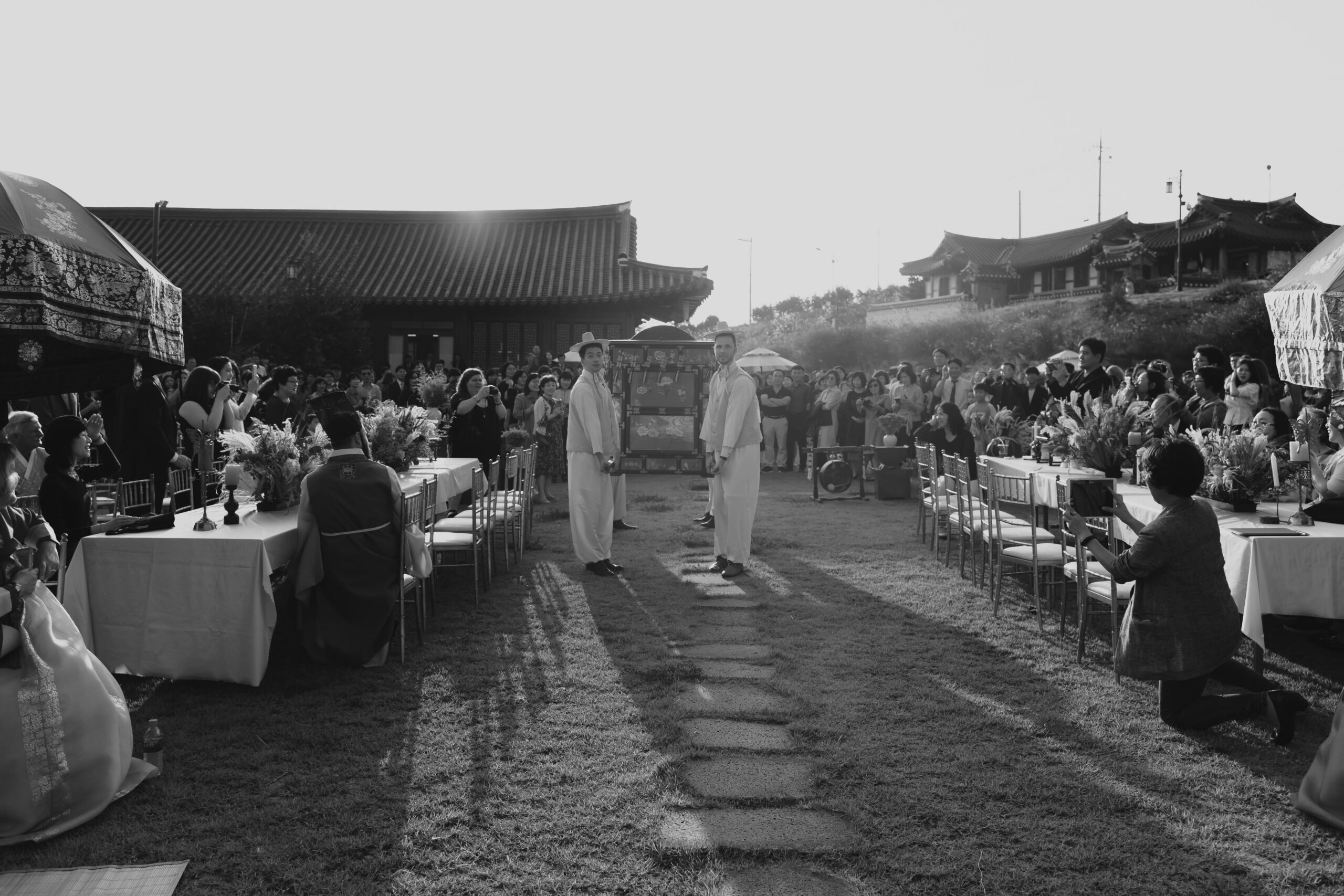
Gyobaerye
Next, the bride and groom begin by standing on opposite sides of a table. Two helpers support each as they wash their hands to symbolize purity in virtue and relationship with one another. A mat is then spread out between them both for the traditional bowing ceremony representing a commitment to each other – first, the bride bows twice while being replied back once; she then bows twice again followed by her groom making an extra deep bow before kneeling down. It’s this solemn moment that solidifies two people joining forces together into lifelong love & marriage!
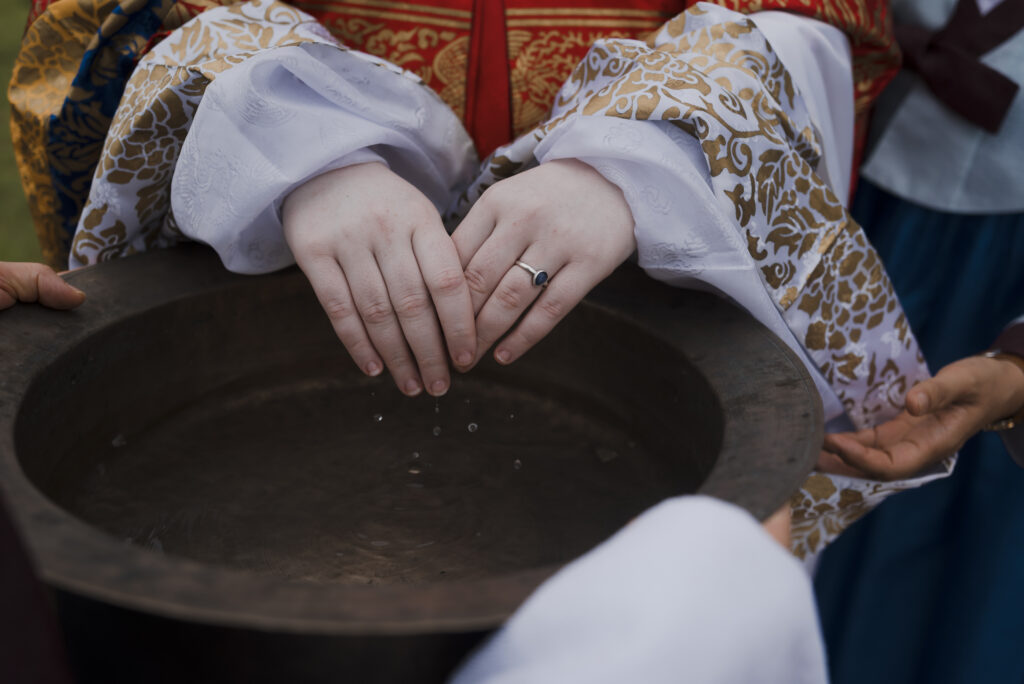
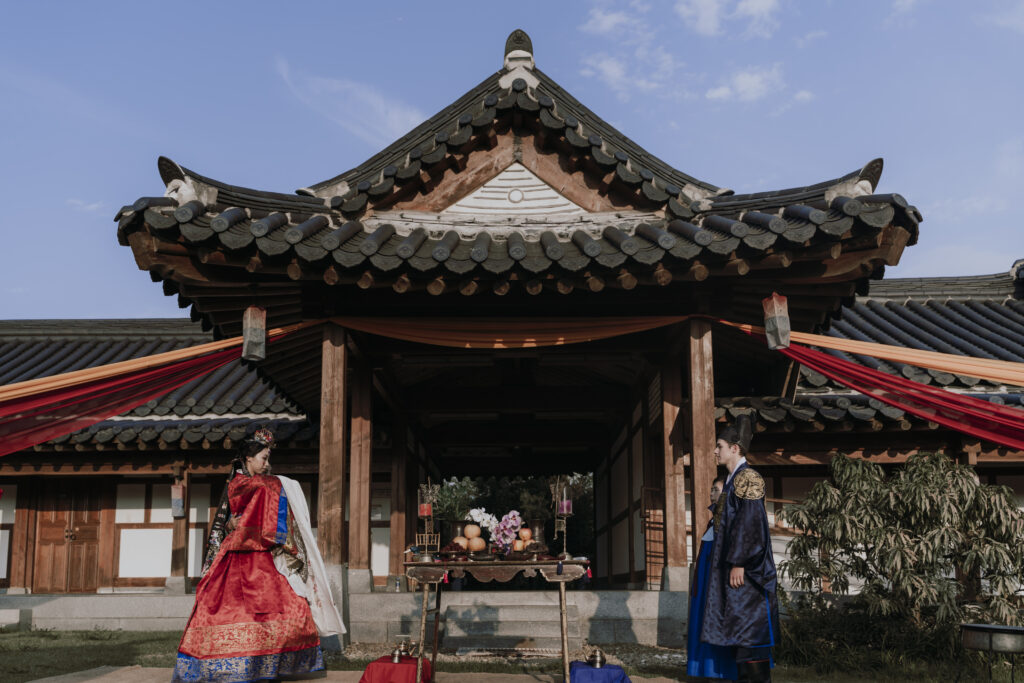
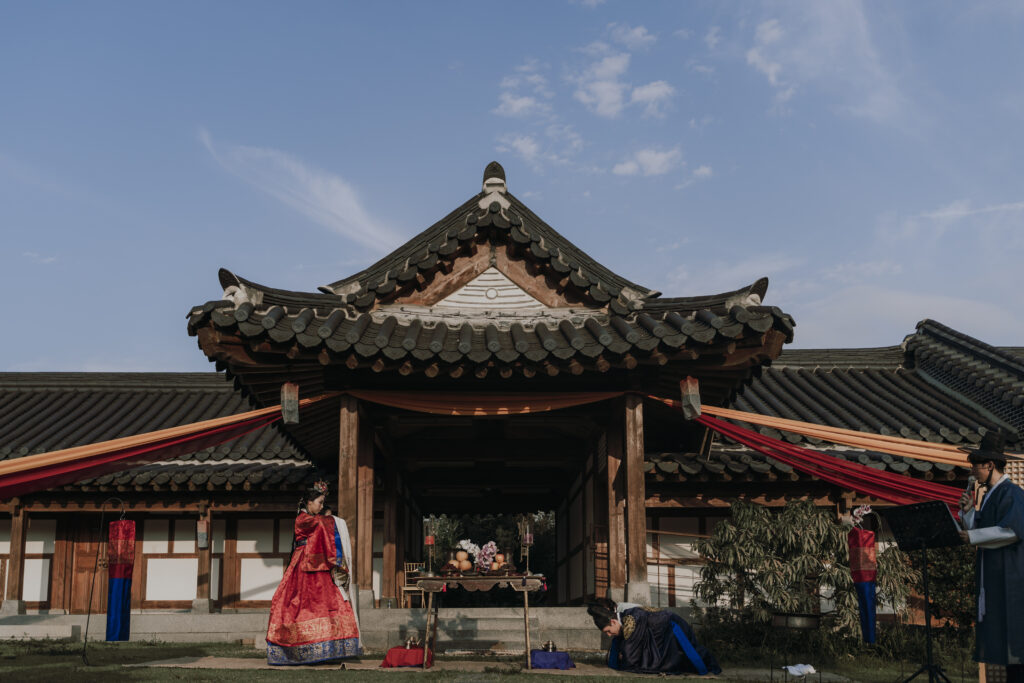
Hapgeunrye
As part of the traditional ceremony, the helpers then prepare an auspicious drink – typically rice wine – accompanied by side dishes. The two then bow to honor their union before offering the drinks and side dishes to the greater spiritual existence that watches over them all.
Following this, the helpers fill the cups which are made of gourd dipper, and the groom bows. The bride and groom will lastly, exchange gourd dippers.
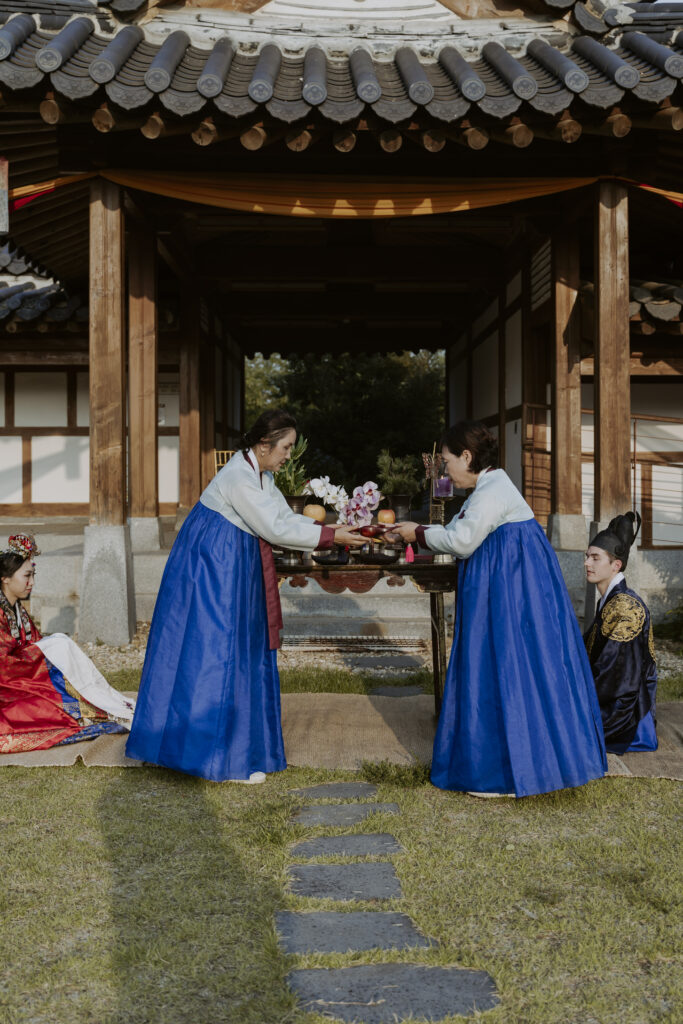
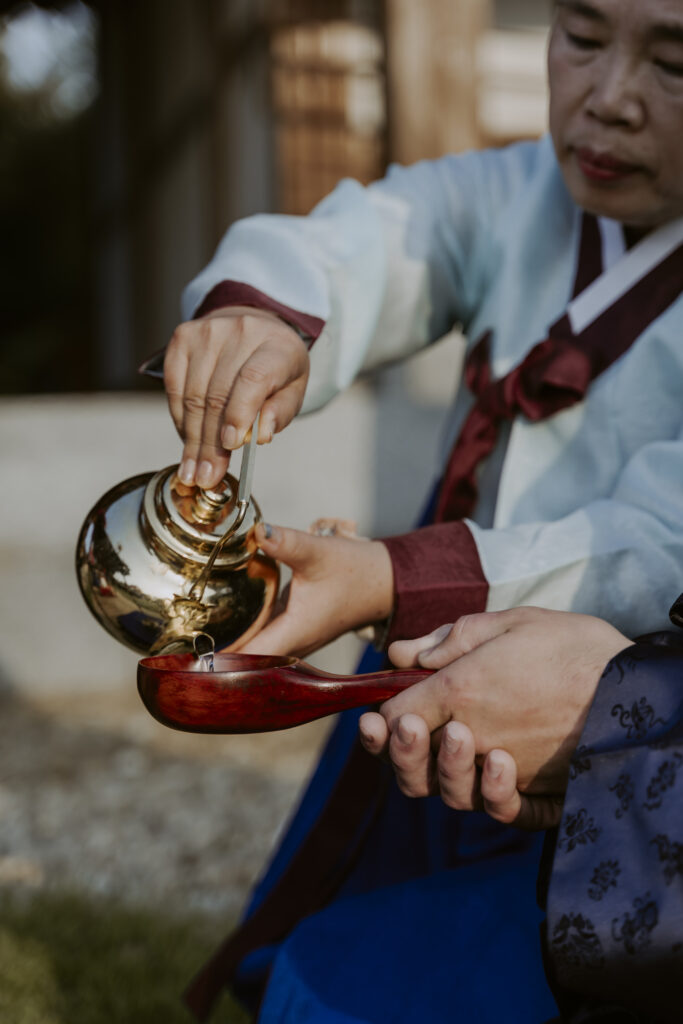
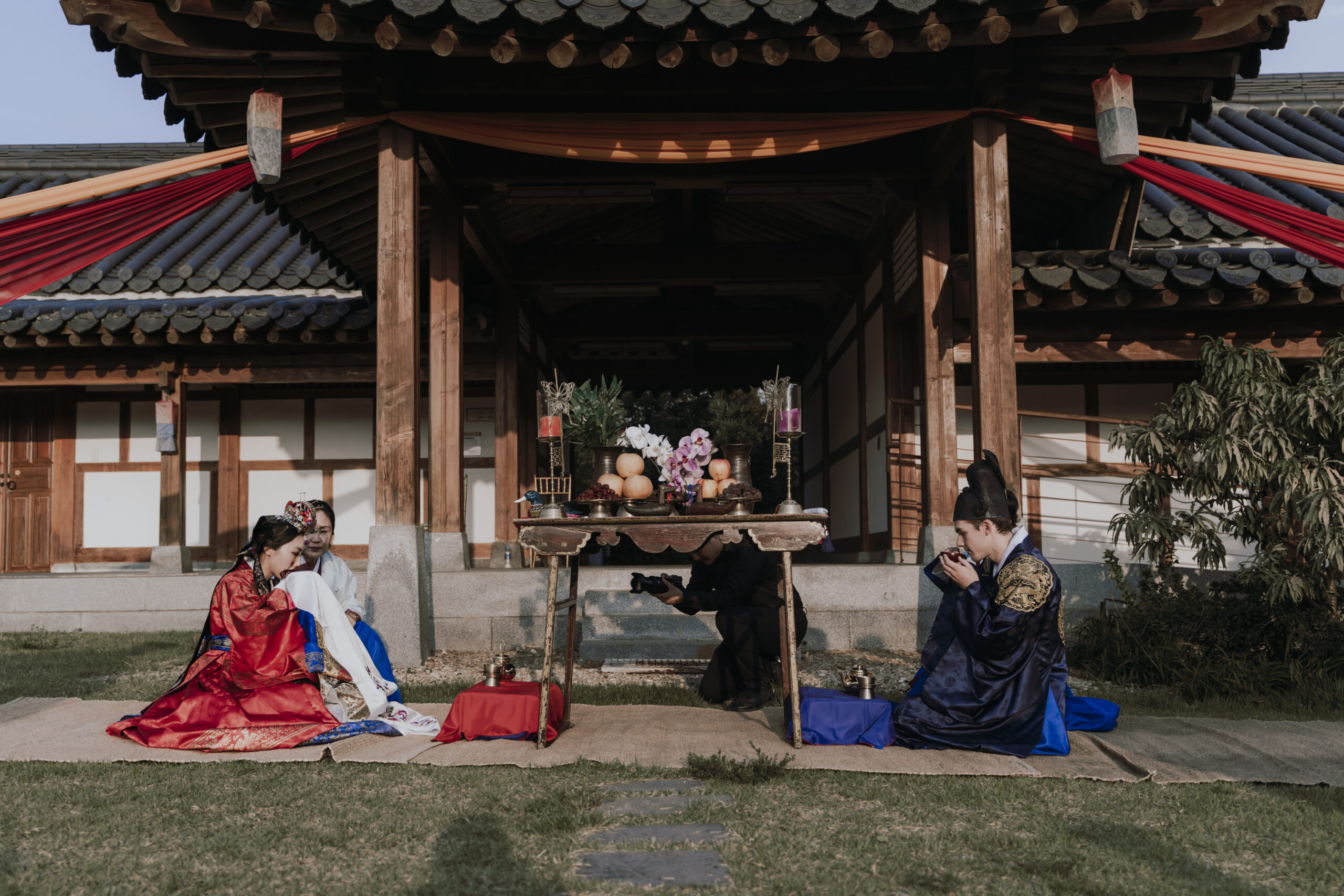
Seonghonrye
After formally expressing their commitment to each other, the newly wedded couple will bow in respect to both of their families -a gesture that marks a defining moment at the start of an exciting new journey. After this emotional tradition, both families and the bride and groom will bow to their guests to thank them for coming to the wedding.
And with that, the couple’s wedding ceremony draws to a close – but this is just one part of the celebration!
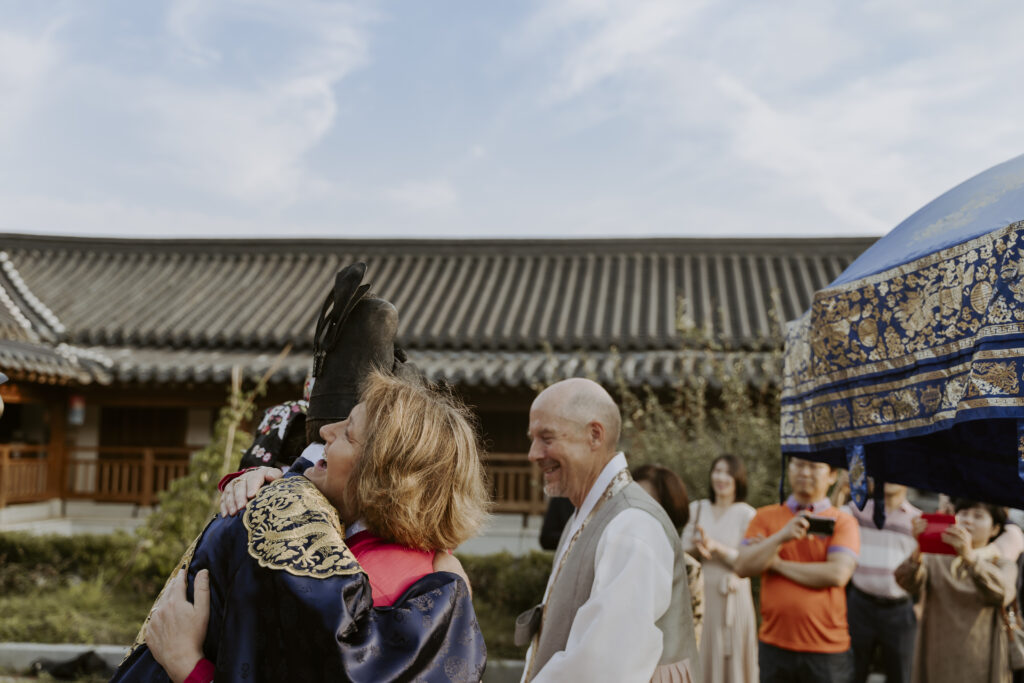
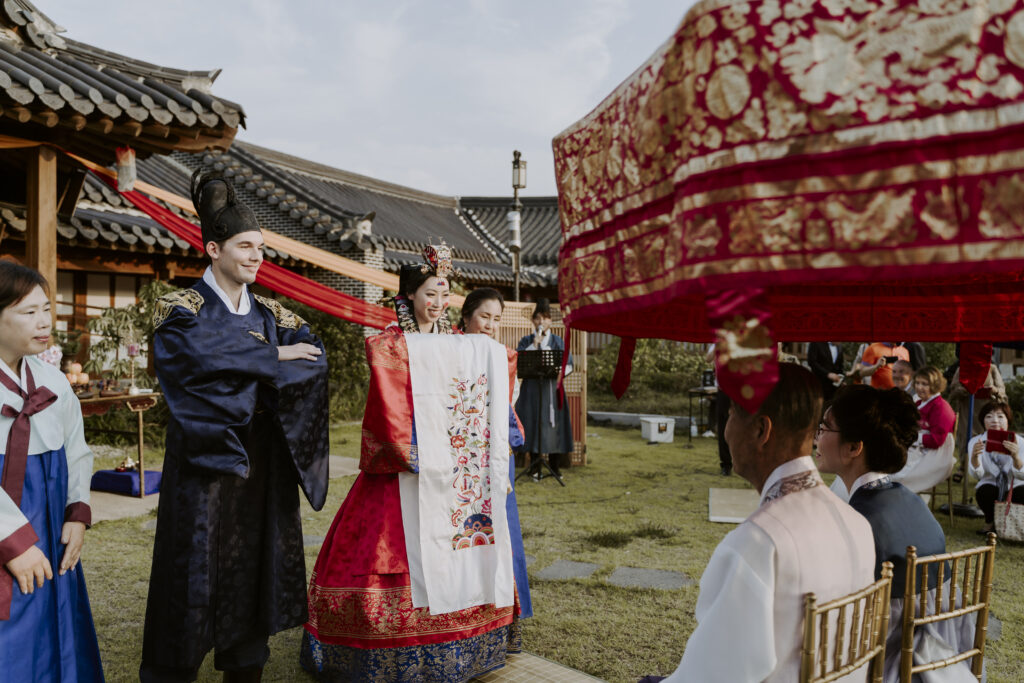
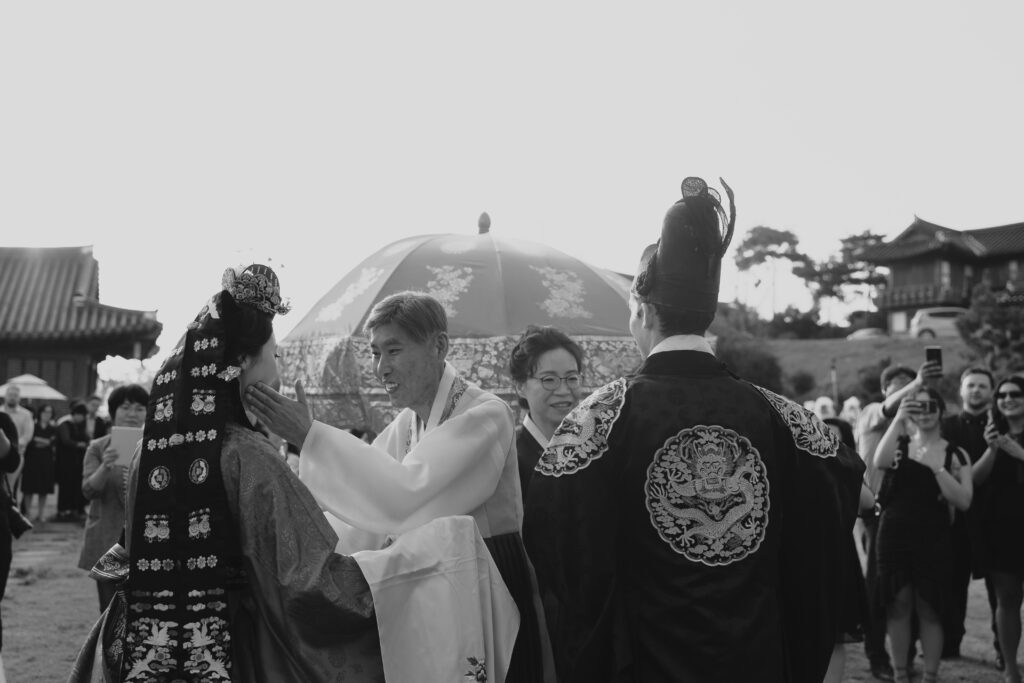
Pyebaek
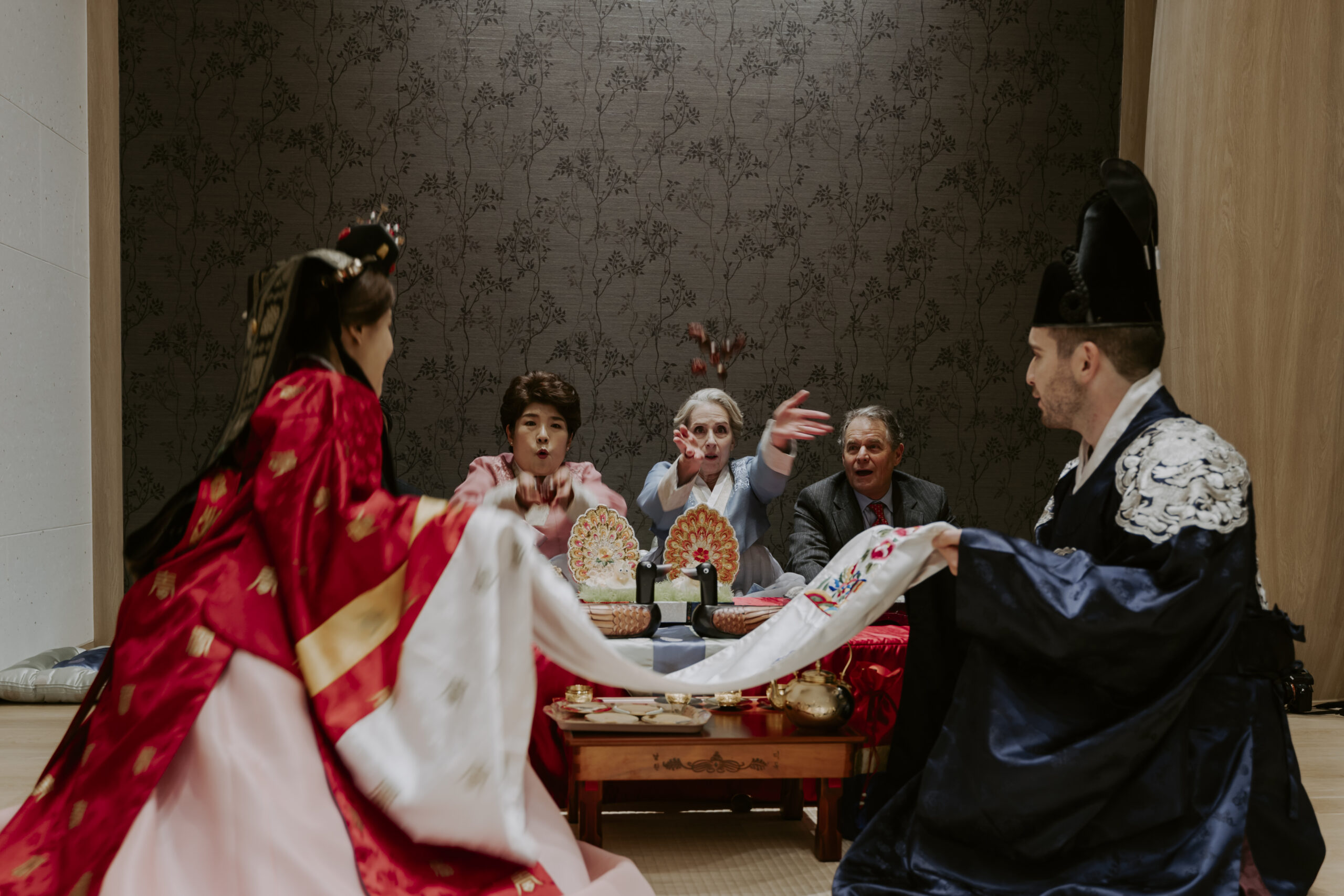
Pyebaek is a Korean wedding tradition that honors the newlyweds’ commitment to their respective families. During this special ceremony, the couple bows in respect and offers drinks of either alcohol or tea as an offering – something traditionally done by just the groom’s family, but now typically involves both sides, especially when one family comes to the wedding from abroad!
During the ceremony, the bride’s family has jujubes (Korean dates) and chestnuts ready — symbolic of their wishes for a blissful marriage with many children.
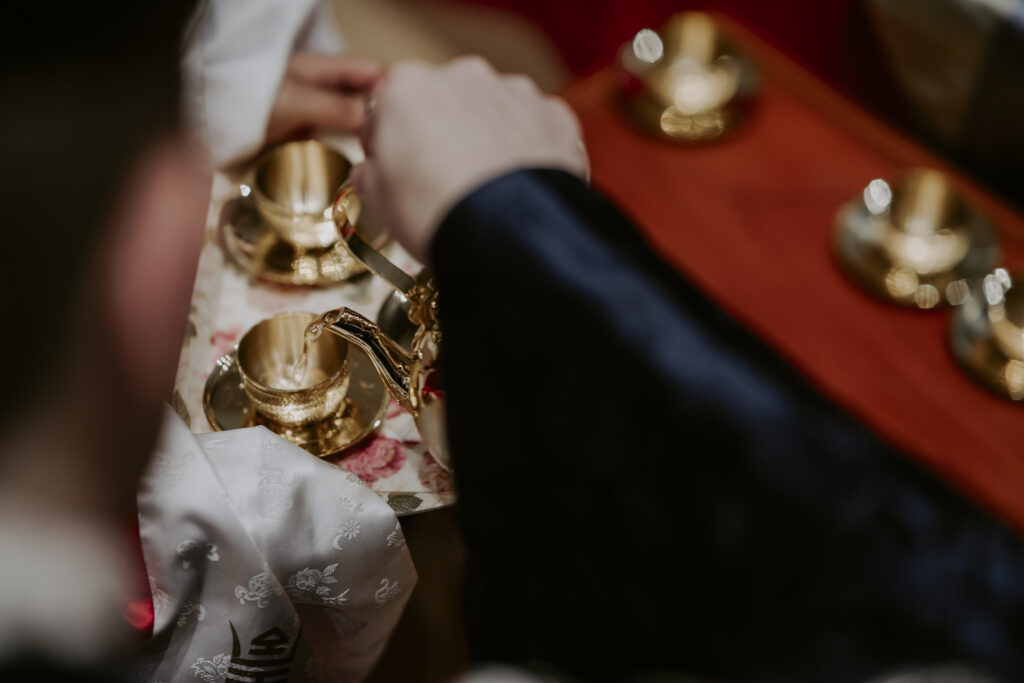

Here are the typical steps involved in a Pyebaek ceremony:
1. The newlyweds, dressed in traditional Korean wedding attire, perform a deep bow to the groom’s parents and offer them a drink of alcohol or tea.
2. The parents will then offer the couple advice and blessings for their marriage.
3. To finish off this special moment, parents then throw dates and chestnuts to the couple – each date signifying a son and every chestnut symbolizing a daughter to come. The bride and groom must try catching them using only her wedding skirt as a net. The more you catch the more children you have in your future!
4. A similar proceeding of offering drinks and bowing is followed by the aunts and uncles of the groom, as well as any of his older siblings.
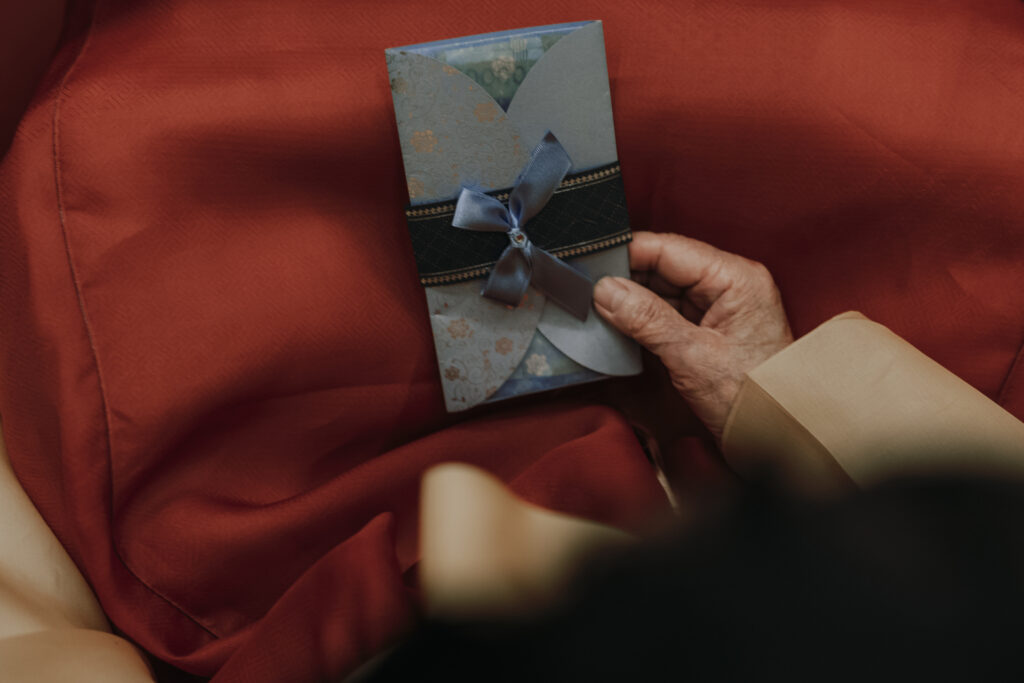
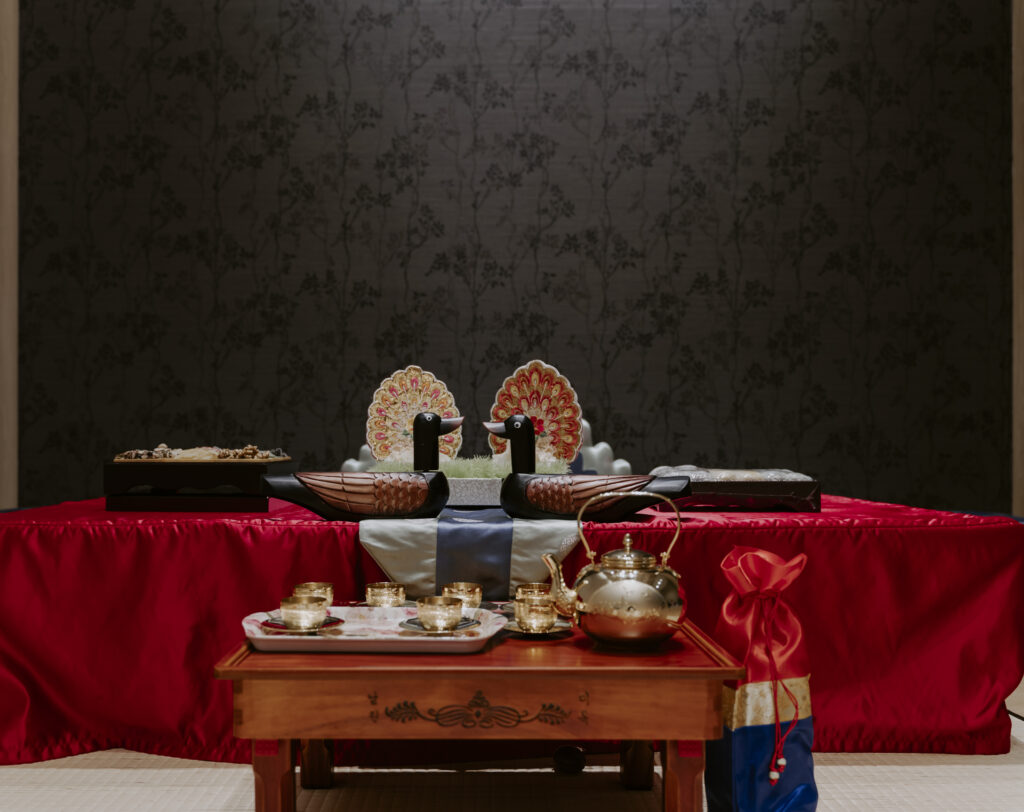
The Pyebaek ceremony is a meaningful and intimate moment in a traditional Korean wedding. It symbolizes the couple’s respect for their elders and commitment to starting their new life together as a united family.
After the ceremony, the groom gives the bride a piggyback. In a traditional Korean wedding, it is common for the groom to piggyback the bride as a symbolic gesture of his willingness to carry her through any difficult times they may face in their marriage.

Modern Adaptations of Traditional Korean Weddings
While traditional Korean weddings have deep roots in history and culture, modern couples often incorporate contemporary elements to personalize their wedding ceremonies. These adaptations allow couples to honor their cultural heritage while adding their unique touch to the celebration.
1. Fusion Weddings: Fusion weddings, combining Korean traditions with elements from other cultures, are gaining popularity among modern couples. These weddings showcase the diversity of the couple’s backgrounds and create a memorable experience for both families.
2. Western-style Ceremonies: Some couples opt for a Western-style ceremony, complete with a white wedding dress and a walk down the aisle. However, they still incorporate traditional Korean elements, such as the hanbok, into their attire to pay homage to their heritage.
3. Casual Intimate Weddings: Since COVID and the restrictions on guest counts, there has been a growing trend towards smaller, more intimate weddings. These weddings focus on creating a warm and relaxed atmosphere, allowing the couple and their guests to truly enjoy each other’s company.
In conclusion, traditional Korean weddings are a celebration of love, respect, and harmony. Every aspect of the ceremony, from the intricate attire to the meticulously planned rituals, holds deep cultural and symbolic meaning. These weddings are not only a union between two individuals but also a merging of two families and a way to honor ancestors.
Preserving cultural traditions is essential in a rapidly changing world. Traditional Korean weddings provide a glimpse into the rich history and cultural heritage of Korea. By embracing and celebrating these traditions, we not only honor our ancestors but also foster a sense of connection and pride in our cultural identity.
